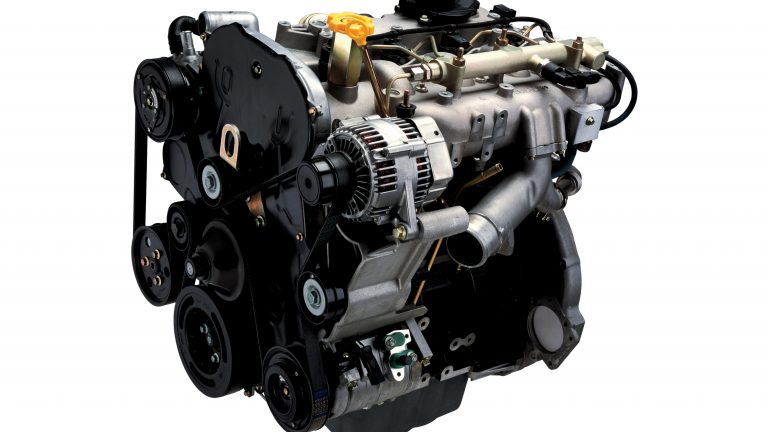[su_image_carousel source=”media: 51052,51053,51054″]
Introduction
Chrysler’s EGG engine was a 3.5-litre V6 petrol engine which powered the Chrysler LX 300C from 2005 to 2011 (see table below). Manufactured in Kenosha, Wisconsin, key features of the EGG engine included its:
- Aluminium alloy block with 60-degree ‘V’ angle;
- Forged crankshaft with cross-bolted main bearing caps;
- Cast aluminium cylinder head;
- Belt-driven single overhead camshaft per cylinder bank;
- Four valves per cylinder actuated by hydraulic end-pivot roller followers;
- Compression ratio of 9.9:1; and,
- Maximum engine speed of 6800 rpm (electronically limited).
[su_table responsive=”yes”]
| Model | Engine | Trans. | Peak power | Peak torque |
|---|---|---|---|---|
| Chrysler LX 300C | 3.5-litre EGG petrol V6 | 5sp auto | 183kW at 6400rpm | 340Nm at 3800rpm |
[/su_table]
Block
The EGG engine had a semi-permanent-mould aluminium block with 96.0 mm bores and an 81.0 mm stroke for a capacity of 3518 cc. Within the bores, the EGG engine had cast-in iron liners. So that oil would quickly return to the oil pan, oil drain passages were cast into the block.
The EGG engine had a forged steel crankshaft with cross-bolted main bearing caps.
Cylinder head
The EGG engine had a cast aluminium cylinder head with a single overhead camshaft (SOHC) per cylinder bank that was driven by a timing belt (also shared with the water pump). The four valves per cylinder actuated by hydraulic end-pivot roller followers and hydraulic lifters
Intake
The EGG engine had an active three-plenum intake manifold with an electronically controlled manifold tuning valve. It is understood that this system enabled the length of the intake runners to be varied according to engine speed whereby:
- A long intake runner would be used at low engine speeds to utilise exhaust pulsations for increased torque; and,
- A short intake runner would be used at high engine speeds to reduce intake resistance and enhance top-end power.
For the Chrysler LX 300C, the EGG engine had electronic throttle control.
Injection and ignition
The EGG engine had electronically-controlled sequential multi-port injection (SMPI) and a compression ratio of 9.9:1. Furthermore, the EGG engine had distributorless, coil-on-plug ignition whereby individual coils were positioned placed directly above each spark plug. For longevity, the sparks plugs had platinum tips.
Exhaust and emissions
The EGG engine had dual, close-coupled three-way catalytic converters, four heated oxygen sensors and electronically-controlled exhaust gas recirculation (EGR). Upon its release in theChrysler LX 300C, the EGG engine complied with Euro IV emissions standards.



